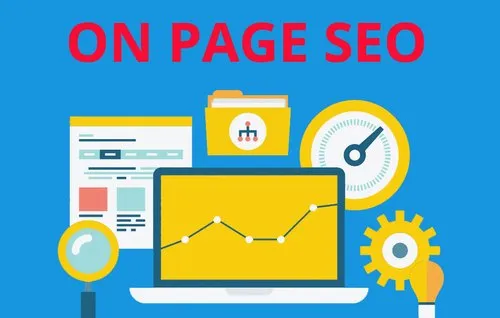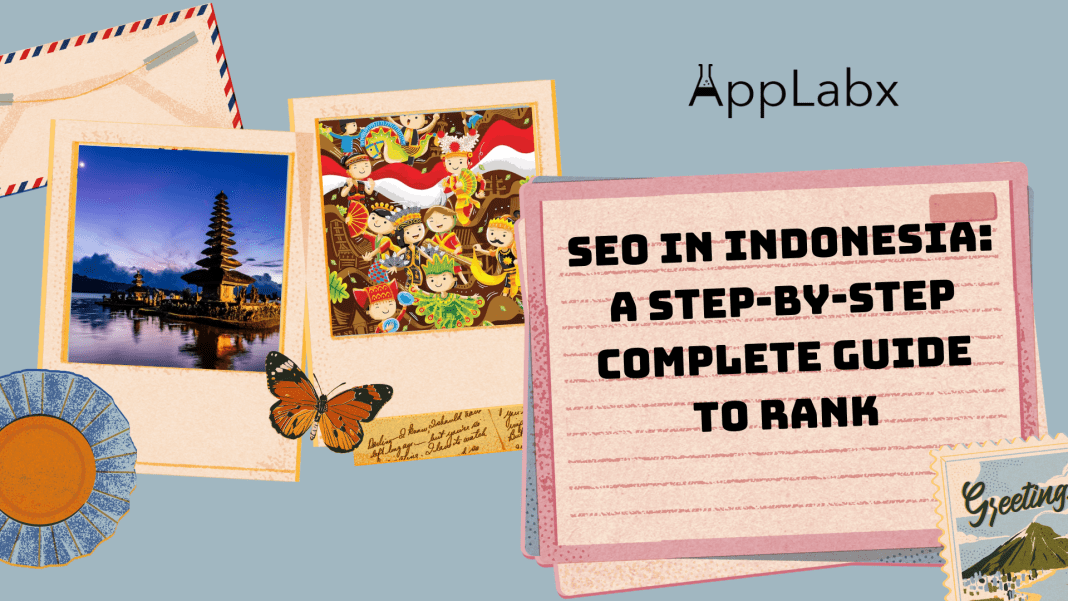Key Takeaways
- Cultural Relevance is Key: Tailor your SEO strategies to align with Indonesian culture, language, and local preferences to establish a meaningful connection with the diverse online audience.
- Mobile Optimization is Imperative: Given Indonesia’s mobile-centric user base, prioritize mobile-friendly design and responsive content to ensure seamless user experiences and enhance search visibility.
- Strategic Localization Amplifies Impact: Leverage local SEO tactics, including Google My Business optimization and localized content, to dominate search rankings in specific regions and resonate with targeted Indonesian audiences effectively.
Welcome to the vibrant and rapidly expanding digital landscape of Indonesia, where the heartbeat of online success resonates with one key rhythm—Search Engine Optimization (SEO).
Mastering the art of SEO is not just an option; it’s the lifeline for businesses aspiring to soar to the zenith of online visibility.
Amid this dynamic digital ecosystem, the quest for supremacy in search engine rankings demands a nuanced understanding of the Indonesian market, its unique linguistic nuances, and the cultural intricacies that shape online interactions.
Whether you’re a budding entrepreneur aiming to carve a niche in the archipelago or an established business seeking to fortify your online presence, this blog is your passport to unravelling the intricacies of SEO in Indonesia.

The Indonesian Digital Odyssey
Indonesia, a sprawling archipelago comprising thousands of islands, is not only a mosaic of diverse cultures but also a mosaic of online behaviours and preferences.
As we embark on this SEO expedition, it’s crucial to navigate the digital archipelago with precision.
From the bustling metropolises of Jakarta and Surabaya to the serene landscapes of Bali and beyond, the online landscape mirrors the rich tapestry of Indonesia’s physical diversity.
The Imperative of SEO in Indonesia
Picture this: A potential customer searches for a product or service in Bahasa Indonesia, the lingua franca of the archipelago.
The question is, will they find your business amidst the digital cacophony?
SEO is the compass that guides your brand through the intricate web of search queries, ensuring that your offerings are not just visible but prominently positioned for the discerning Indonesian audience.
Unlocking the SEO Code: A Step-by-Step Odyssey
Embarking on this SEO odyssey requires more than a mere understanding of keywords and backlinks.
It demands a strategic blueprint tailored to the Indonesian context, a blueprint we’re about to unfurl. This comprehensive guide is not just a roadmap; it’s your seasoned navigator through the ever-evolving terrain of Indonesian SEO.
As we delve into the depths of keyword research, on-page optimization, off-page strategies, and the intricacies of local SEO, consider this your digital compass, pointing you toward the coveted pinnacle of search engine rankings.
But this guide is more than a set of instructions; it’s a narrative woven with insights, case studies, and a keen understanding of the Indonesian digital ethos.
But, before we venture further, we like to share who we are and what we do.
About AppLabx
From developing a solid marketing plan to creating compelling content, optimizing for search engines, leveraging social media, and utilizing paid advertising, AppLabx offers a comprehensive suite of digital marketing services designed to drive growth and profitability for your business.
AppLabx is well known for helping companies and startups in Indonesia use SEO to drive web traffic to their websites and web apps.
At AppLabx, we understand that no two businesses are alike. That’s why we take a personalized approach to every project, working closely with our clients to understand their unique needs and goals, and developing customized strategies to help them achieve success.
If you need a digital consultation, then send in an inquiry here.
SEO in Indonesia: A Step-by-Step Complete Guide To Rank
- Understanding the Indonesian Search Landscape
- Keyword Research for the Indonesian Market
- On-Page SEO Optimization
- Off-Page SEO Strategies
- Local SEO Tactics
- Technical SEO for Indonesian Websites
- Content Marketing Strategies
- Measuring and Analyzing SEO Success
1. Understanding the Indonesian Search Landscape
The digital terrain of Indonesia is a dynamic and expansive ecosystem, where understanding the intricacies of the search landscape is the key to unlocking online success.

Search Engines Dominating the Archipelago
In the vast archipelago of Indonesia, Google reigns supreme as the primary search engine, commanding an impressive market share of over 93.5%.
While other search engines like Bing and Yahoo exist, they play a marginal role in influencing the search behaviours of the Indonesian population.
Indonesian Language Dynamics: Bahasa Indonesia in Search Queries
Bahasa Indonesia, the national language of Indonesia, is the linchpin of online communication.
When it comes to search queries, users predominantly express their intent in Bahasa Indonesia.

This linguistic dominance underscores the critical importance of crafting SEO strategies tailored to the nuances of the Indonesian language.
Mobile-First Nation: A Glimpse into Search Behavior
This prevalence of mobile devices significantly shapes the search behavior of Indonesians. Websites optimized for mobile responsiveness not only cater to user experience but are also favored by search algorithms.
Google’s mobile-first indexing, where the mobile version of a site is given priority, accentuates the need for mobile optimization.
Localized Content and User Intent
Understanding user intent is pivotal in the Indonesian context. Search queries often reflect a preference for localized content.
For instance, an Indonesian user searching for “makanan enak di Jakarta” (delicious food in Jakarta) expects localized results, emphasizing the importance of incorporating geo-specific keywords.
Google’s emphasis on local search is reflected in its algorithm, which prioritizes businesses with accurate and consistent local information.
E-commerce and the Digital Marketplace
Indonesia boasts a burgeoning e-commerce landscape, with platforms like Tokopedia and Shopee dominating the digital marketplace.
This paradigm shift towards online shopping has reshaped search dynamics. E-commerce businesses, therefore, need to focus on optimizing product pages, leveraging high-quality images, and ensuring a seamless user experience to stand out in the competitive digital marketplace.
Navigating the Cultural Tapestry: Content Relevance Matters
Cultural sensitivity plays a crucial role in the Indonesian search landscape.
Content that resonates with the local culture, traditions, and societal norms is more likely to gain traction.
For instance, during Ramadan, searches for “resep makanan berbuka puasa” (recipes for breaking fast) surge, presenting an opportunity for food-related businesses to tailor their content to meet the seasonal demands of users.
Video Content Ascendance: The Rise of YouTube
YouTube holds significant sway in Indonesia.
With an internet user base that consumes vast amounts of video content, businesses should leverage YouTube SEO strategies to enhance their visibility.
Creating content in Bahasa Indonesia and optimizing video titles, descriptions, and tags for local relevance can significantly boost rankings on this influential platform.
2. Keyword Research for the Indonesian Market
In the intricate landscape of the Indonesian digital realm, understanding and harnessing the power of keywords in Bahasa Indonesia is a fundamental pillar for any successful SEO strategy.

High-Volume and Relevant Keywords: A Quest for Digital Gold
Identifying high-volume keywords that resonate with the Indonesian audience is the cornerstone of effective keyword research.
Tools like Google Keyword Planner, Ubersuggest, and Ahrefs provide valuable insights into the search volumes and competitiveness of keywords.
For instance, a business in the travel industry might target keywords like “pantai di Bali” (beaches in Bali) to tap into the significant search volume related to popular tourist destinations.
The Dynamics of Long-Tail Keywords
Long-tail keywords, while individually attracting lower search volumes, collectively account for a substantial portion of online searches.
This is especially true in a market as diverse as Indonesia.
For example, a fitness brand might explore long-tail keywords like “olahraga di rumah tanpa alat” (home workouts without equipment) to capture the growing interest in fitness activities that can be done at home, especially during times of movement restrictions.
Seasonal and Trending Keywords: Riding the Digital Waves
Staying attuned to seasonal and trending keywords is a strategic move to ride the digital waves of user interest.
For instance, during festive seasons like Idul Fitri, searches for keywords like “baju lebaran online” (online Eid clothing) spike. Anticipating and optimizing for such trends can give businesses a competitive edge during peak search periods.
Localized Keywords for Geo-Targeting
In a country with diverse regions, incorporating localized keywords is imperative for businesses aiming to capture specific geographical markets.
For instance, a restaurant chain in Jakarta might optimize for keywords like “restoran enak di Jakarta” (delicious restaurants in Jakarta) to enhance visibility among local audiences.
Utilizing tools like Semrush or Moz, businesses can identify geo-specific keywords to tailor their content accordingly.
Competitor Analysis: Learning from the Leaders
Analyzing competitors’ keyword strategies is a valuable tactic in keyword research.
Tools like Semrush and Ahrefs allow businesses to identify the keywords their competitors are ranking for, providing insights into potential gaps or opportunities.
For instance, a tech company could analyze competitors in the Indonesian market to uncover keywords related to emerging technologies or digital innovations.
User Intent in Bahasa Indonesia: The Heart of Keyword Research
Understanding user intent is the essence of effective keyword research.
Users express their queries in various ways, from seeking information (“cara membuat kue” – how to make a cake) to commercial intent (“beli kamera online” – buy a camera online).
Crafting content that aligns with user intent ensures not just visibility but engagement. Utilizing tools like Google Trends to gauge the popularity of specific queries can help businesses tailor their content to match prevailing user interests.
3. On-Page SEO Optimization
In the dynamic landscape of Indonesian search, mastering the intricacies of on-page SEO optimization is paramount for businesses aiming to secure a prominent position in search engine results.

SEO-Friendly Content Creation in Bahasa Indonesia
Crafting content that resonates with the linguistic nuances of Bahasa Indonesia is the cornerstone of on-page SEO success.
For instance, a travel agency targeting the Indonesian market might create content around keywords like “destinasi liburan terbaik” (best vacation destinations), ensuring the inclusion of relevant phrases that align with user search behaviors.
Optimizing Meta Tags for Maximum Impact
Meta tags play a pivotal role in signaling the content and intent of a page to search engines.
Crafting compelling title tags and meta descriptions in Bahasa Indonesia not only enhances click-through rates but also establishes relevance.
Pages with a meta description had a 5.8% higher CTR compared to pages without a description.
For example, a fashion e-commerce site might optimize its meta tags with phrases like “belanja baju online” (shop for clothes online) to attract users searching for online clothing stores.
Header Tags and Content Hierarchy: Structuring for Readability
Properly structuring content with header tags (H1, H2, H3, etc.) enhances readability and helps search engines understand the hierarchy of information.
This not only improves user experience but also contributes to SEO. Research by Searchmetrics indicates that pages with a clear content structure tend to rank higher.
A health and wellness blog targeting Indonesian audiences might use header tags to organize content about “tips hidup sehat” (tips for a healthy life) into easily digestible sections.
Image Optimization for Visual Appeal and SEO Impact
In the visually-driven online landscape, optimizing images is crucial for user engagement and SEO. Compressing images to ensure fast loading times is imperative, given Indonesia’s mobile-centric user base.
According to Google, 53% of visits are likely to be abandoned if pages take longer than 3 seconds to load.
An e-commerce website selling handmade crafts might optimize product images with descriptive file names like “kerajinan-tangan-unik” (unique handmade crafts) for both visual appeal and SEO benefits.
Mobile Optimization: A Non-Negotiable Imperative
Given Indonesia’s mobile-first orientation, mobile optimization is non-negotiable for on-page SEO success.
Google’s mobile-first indexing prioritizes the mobile version of a site, making it essential for businesses to ensure seamless mobile experiences.
A study by Statista reveals that Indonesian internet users are among the most active mobile internet users in the Asia-Pacific region.
Thus, a restaurant website might focus on mobile optimization to provide an effortless browsing experience for users searching for “restoran di dekat saya” (restaurants near me) on their smartphones.
Internal Linking Strategies: Enhancing Content Connectivity
Strategic internal linking not only guides users to relevant content but also distributes link equity across a website.
Pages with strong internal link structures tend to perform better in search rankings.
For instance, a technology blog could internally link relevant articles about “inovasi teknologi terbaru” (latest technology innovations) to provide a cohesive user experience and signal to search engines the thematic relevance of the content.
4. Off-Page SEO Strategies
In the expansive realm of Indonesian digital marketing, mastering off-page SEO strategies is paramount for businesses seeking to establish authority and credibility beyond their website’s confines.

Building High-Quality Backlinks: The Currency of Digital Trust
- Strategic Link Building: Actively seek opportunities to build high-quality backlinks from reputable Indonesian websites. Backlinks remain a crucial ranking factor.
- Example: A travel agency operating in Indonesia might collaborate with local tourism boards, earning backlinks from official destination websites like “Wonderful Indonesia.”
- Guest Posting on Niche Websites: Contribute valuable content to niche-specific websites within Indonesia, fostering relationships and earning backlinks in the process.
Guest posting not only expands the brand’s reach but also solidifies its presence within the targeted industry.- Example: An e-commerce platform specializing in handmade crafts might contribute an article on traditional Indonesian handicrafts to a popular lifestyle blog, earning backlinks in the process.
- Local Business Directories and Listings: Ensure consistent and accurate business information on local directories and listings. This not only aids local SEO efforts but also establishes credibility. 86% of consumers rely on the internet to find a local business.
- Example: A restaurant in Jakarta should ensure its details, such as name, address, and phone number, are consistent across platforms like Google My Business, Yelp, and local directories.
Leveraging Social Media for SEO Impact
- Social Signals and SEO Correlation: While Google officially states that social signals are not direct ranking factors, there is a correlation between social media presence and improved search rankings.
- Example: A fashion brand in Indonesia can utilize platforms like Instagram and Facebook to showcase its products, encouraging user engagement and indirectly influencing search visibility.
- Influencer Collaborations: Partnering with influencers in Indonesia can amplify a brand’s reach and foster organic backlinks. Influencer marketing is a powerful avenue.
- Example: A beauty product brand might collaborate with an Indonesian beauty influencer to review and promote its products, creating a ripple effect of social signals and potential backlinks.
Localizing Content and Maximizing User Engagement
- Encouraging User-Generated Content (UGC): Actively encourage customers to generate content related to the brand. User-generated content not only fosters a sense of community but also provides valuable material that can be shared and linked to.
- Example: A hospitality brand could run a social media contest encouraging guests to share photos of their experiences, creating a stream of UGC that can be shared on the website.
- Localizing Content for Cultural Relevance: Tailor content to align with Indonesian culture, traditions, and societal norms. Content that resonates with local audiences is more likely to be shared, increasing its reach and potential for backlinks.
- Example: During Ramadan, a brand might create content around traditional Indonesian recipes for breaking fast, and fostering cultural connection and engagement.
5. Local SEO Tactics
In the dynamic marketplace of Indonesia, mastering local SEO tactics is indispensable for businesses seeking to establish a robust online presence within specific geographical regions.
From optimizing Google My Business to harnessing the power of local structured data markup, these strategies play a pivotal role in capturing the attention of the local audience.

Optimizing Google My Business for Local Visibility
- Complete and Accurate Business Information: Ensure that your Google My Business (GMB) profile is complete with accurate business information.
According to Google, customers are 2.7 times more likely to consider a business reputable if they find a complete Business Profile on Google Search and Maps.- Example: A local café in Bandung should include precise details like its address, phone number, business hours, and a brief description of its offerings.
- Customer Reviews and Ratings: Actively encourage customers to leave reviews on your GMB profile. Positive reviews not only enhance your reputation but also contribute to local search rankings.
91% of consumers read online reviews, from books to clothes to health insurance.- Example: A hotel in Yogyakarta might implement a review-gathering strategy, prompting satisfied guests to share their positive experiences on its GMB page.
- Regularly Update GMB Content: Keep your GMB profile updated with fresh content, such as posts, photos, and events. Google favors active and engaged listings, and businesses that regularly update their GMB profiles are more likely to appear in local search results.
- Example: A fitness studio in Surabaya could regularly post updates about upcoming classes, special promotions, and images showcasing the facility on its GMB profile.
Local Structured Data Markup Implementation
- Schema Markup for Local Businesses: Implement local schema markup on your website to provide search engines with structured information about your business. This can enhance the visibility of key details, such as business name, address, and phone number.
- Example: An online bookstore based in Jakarta might use local business schema markup to highlight its physical location, contact details, and operating hours.
- Geo-Targeted Landing Pages: Create dedicated landing pages for specific locations you serve. This not only improves user experience but also signals to search engines the geographical relevance of your business.
- Example: A photography studio with multiple branches across Indonesia could create unique landing pages for each city it operates in, optimizing content for local keywords.
- Local Event Markup: If your business hosts events or participates in local activities, use event schema markup to provide search engines with structured data about these events. This can boost visibility in local search results.
- Example: A restaurant in Bali hosting a special culinary event might implement event schema markup to ensure that details like date, time, and location are accurately presented in search results.
Encouraging Customer Reviews and Testimonials in Bahasa Indonesia
- Incentivize and Simplify Review Submission: Actively encourage customers to leave reviews in Bahasa Indonesia. Providing incentives or making the review submission process simple and straightforward can increase participation.
- Example: An e-commerce platform could offer discounts or exclusive deals to customers who leave reviews in Bahasa Indonesia, creating a positive feedback loop.
- Responding to Reviews Professionally: Engage with customer reviews, both positive and negative, in a professional manner. Responding to reviews shows authenticity and a commitment to customer satisfaction.
- Example: A local service provider responding to a negative review might offer a sincere apology, address the concerns raised, and propose a resolution, showcasing a customer-centric approach.
Implementing Local SEO Strategies for Mobile Users
- Mobile-Friendly Website Design: Given Indonesia’s mobile-centric user base, having a mobile-friendly website is crucial. Google emphasizes mobile-first indexing, making mobile optimization a significant factor in local search rankings.
- Example: A local bakery in Jakarta could ensure that its website is responsive and designed for seamless navigation on various mobile devices.
- Localized Mobile Content: Tailor your mobile content to align with local preferences and mobile search behaviors. Consider factors such as shorter search queries and the use of voice search.
- Example: A home services provider might optimize mobile content with phrases like “layanan servis rumah” (home service) to align with common mobile search queries.
6. Technical SEO for Indonesian Websites
In the dynamic landscape of Indonesian digital realms, mastering technical SEO is a cornerstone for businesses seeking to optimize their websites for search engines, improve user experience, and stay ahead in the competitive online arena.

Ensuring Fast Loading Times for Indonesian Users
- Compressed Images and Efficient Multimedia: Compressing images and optimizing multimedia content is essential to enhance website loading times, especially in a country where mobile usage prevails.
- Example: An e-commerce platform catering to the Indonesian market might use image compression tools to ensure quick loading times for product images, improving overall user experience.
- Leveraging Content Delivery Networks (CDNs): Using CDNs can distribute website content across servers strategically placed around the world, ensuring faster loading times for users in various regions.
This is particularly valuable in a country as geographically diverse as Indonesia.- Example: A news website serving a national audience could implement a CDN to efficiently deliver news articles to users across different islands, minimizing latency.
Implementing HTTPS for Secure Browsing
- Security as a Ranking Signal: Google prioritizes secure websites, and HTTPS is considered a ranking signal. A study found that 65 percent of domains in the top three positions for very high-volume keywords are already secure.
- Example: An online banking platform in Indonesia must implement HTTPS to secure user data during transactions, fostering trust and meeting security expectations.
- SSL Certificates for Data Encryption: SSL certificates encrypt data transmitted between the user’s browser and the website’s server, ensuring secure communication. This is crucial for protecting sensitive information, and websites without SSL may be flagged as insecure.
- Example: An e-commerce site collecting personal information and payment details from customers should implement SSL encryption to safeguard user data.
Addressing Crawlability and Indexability Issues
- Robots.txt Optimization: The robots.txt file guides search engine crawlers on which pages to crawl and index. Optimizing this file ensures that search engines can efficiently navigate the website.
- Example: A content-heavy website might use robots.txt to prevent search engines from crawling non-essential pages, focusing on indexing critical content.
- XML Sitemap Submission: Submitting an XML sitemap to search engines helps them understand the website’s structure and prioritize crawling. This is particularly important for large websites with numerous pages.
- Example: An e-commerce platform with a vast product catalog might submit an XML sitemap to ensure that product pages are efficiently crawled and indexed.
Mobile Optimization for Indonesia’s Mobile-First User Base
- Responsive Design for Mobile Devices: Websites must be designed responsively to ensure a seamless user experience across various devices, especially considering that the number of mobile internet users in Indonesia was forecast to continuously increase between 2024 and 2028 by in total of 13.2 million users (+5.51 percent).
- Example: A travel booking site catering to Indonesian users would implement a responsive design to facilitate easy navigation and booking on mobile devices.
- Google’s Mobile-First Indexing: Google predominantly uses the mobile version of a website for indexing and ranking. Ensuring that the mobile version is optimized is imperative for search visibility.
- Example: A local restaurant website should prioritize mobile-friendly features such as easy navigation, clear calls-to-action, and concise information to enhance the mobile user experience.
Structured Data Markup Implementation
- Schema Markup for Rich Snippets: Implementing schema markup provides search engines with additional context about the content on a webpage, potentially leading to rich snippets in search results, which can improve click-through rates.
- Example: An events website could use schema markup to provide details about upcoming concerts, including dates, times, and venues, enhancing its appearance in search results.
- Local Business Markup: For businesses serving local markets, implementing local business structured data markup provides search engines with essential information about the business, improving local search visibility.
- Example: A bakery in Jakarta could use local business markup to specify its location, contact information, and operating hours, helping local users find relevant information quickly.
7. Content Marketing Strategies
In the vibrant landscape of Indonesian digital marketing, content marketing strategies play a pivotal role in establishing brand identity, engaging audiences, and driving organic traffic.
From developing a content calendar with culturally relevant topics to incorporating multimedia elements for enhanced engagement, these strategies serve as the linchpin for sustained online success.

Developing a Culturally Relevant Content Calendar
- Identifying Local Trends and Seasons: Crafting a content calendar that aligns with local trends and seasons is paramount for resonating with Indonesian audiences.
- Example: A fashion e-commerce platform might tailor its content calendar to include seasonal collections aligned with cultural events such as Ramadan and Independence Day.
- Incorporating Local Holidays and Festivals: Integrating content around local holidays and festivals not only captures the festive spirit but also taps into heightened user engagement during these periods.
- Example: A food blog could create content featuring traditional recipes during Lebaran, offering readers relevant and timely content for the celebratory season.
- Cultural Awareness in Content Creation: Demonstrating cultural sensitivity in content creation is crucial. Brands must be aware of local customs, traditions, and societal norms to avoid inadvertently causing offense.
- Example: An international brand might collaborate with local creators to ensure that marketing campaigns respect and celebrate Indonesian culture, fostering a positive brand image.
Incorporating Multimedia Content for Better Engagement
- Leveraging Video Content: Video content is a powerful tool for engaging Indonesian audiences.
In the third quarter of 2022, Indonesian internet users spent two hours and 53 minutes per day on average watching television and content delivered via broadcast and streaming services.- Example: A travel agency could create immersive video content showcasing the beauty of destinations across Indonesia, inspiring and engaging potential travelers.
- Visual Storytelling through Infographics: Infographics are effective in conveying information quickly. For instance, an infographic illustrating the steps of a DIY project or a guide to local attractions can enhance user engagement.
- Example: A home improvement store might create an infographic detailing easy home renovation tips, catering to the DIY culture that resonates with Indonesian homeowners.
- Podcasting for Auditory Appeal: The popularity of podcasts is on the rise globally. In Indonesia, the potential for auditory content is vast, with a growing number of users embracing this medium.
- Example: A finance company could launch a podcast series offering financial tips and insights in Bahasa Indonesia, catering to the auditory preferences of local audiences.
Translating Global Content to Resonate Locally
- Localization of Global Campaigns: For global brands, localizing global campaigns ensures that content resonates with Indonesian audiences. This involves adapting messaging, imagery, and cultural references.
- Example: An international tech company might customize its global advertising campaign to highlight features relevant to Indonesian users, aligning the product with local needs.
- Translation and Adaptation: Ensuring that content is not only translated but also adapted to local nuances is crucial. Literal translations may miss the mark, whereas adaptation considers cultural context.
- Example: An e-learning platform could adapt its course content to incorporate examples and case studies that are familiar and relevant to Indonesian learners.
Consistent Blogging for Authority-building
- Regular and Informative Blog Posts: Consistency in publishing blog posts is key to establishing authority and credibility. Companies that published 16+ blog posts per month got almost 3.5X more inbound traffic than companies that published between 0-4 monthly posts.
- Example: A technology company might regularly publish blog posts covering the latest trends, product updates, and how-to guides to position itself as an industry authority.
- Guest Blogging and Collaborations: Collaborating with industry influencers or experts through guest blogging can expand the reach of your content and bring diverse perspectives to your audience.
- Example: A sustainable lifestyle brand might collaborate with environmental activists for guest blog posts, fostering credibility and attracting a wider audience interested in eco-friendly practices.
8. Measuring and Analyzing SEO Success
In the dynamic landscape of digital marketing, the ability to measure and analyze SEO success is paramount for businesses seeking to optimize their online presence, enhance visibility, and drive meaningful traffic.
From deciphering key performance indicators (KPIs) to leveraging advanced analytics tools, these strategies serve as the compass guiding businesses toward data-driven decision-making.

Deciphering Key Performance Indicators (KPIs)
- Organic Traffic Growth: The increase in organic traffic is a fundamental KPI for SEO success. Google Analytics is a powerful tool to track organic traffic over time, showcasing the impact of SEO efforts.
- Example: A blog optimizing content around popular keywords might see a steady increase in organic traffic, indicating effective SEO strategies.
- Keyword Rankings: Monitoring keyword rankings is essential for evaluating the effectiveness of SEO campaigns. Tools like Ahrefs or Semrush provide insights into how well specific keywords are performing.
- Example: A local business targeting the keyword “best coffee shop in Jakarta” can track its ranking to assess the impact of localized SEO efforts.
- Conversion Rates: Beyond traffic, the ultimate goal is conversions. Google Analytics enables businesses to track conversion rates, indicating the percentage of visitors who take desired actions, such as making a purchase or filling out a form.
- Example: An e-commerce website can assess its SEO success by tracking the conversion rate of visitors from organic search traffic.
Utilizing Google Search Console for Insights
- Click-Through Rate (CTR): Google Search Console provides valuable data on CTR, indicating the percentage of users who click on a website’s link in search results. A higher CTR suggests that the website is compelling and relevant.
- Example: By optimizing meta tags and snippets, a website might experience an increase in CTR, signaling improved click-through from search results.
- Indexation Status: Understanding how many pages are indexed by Google is crucial. Google Search Console offers insights into indexation status, helping identify any crawling or indexing issues.
- Example: A website noticing a decline in indexed pages can investigate and address potential issues, ensuring optimal visibility.
- Mobile Usability: With mobile-first indexing, assessing mobile usability is vital. Google Search Console provides information on mobile usability issues that might impact search performance.
- Example: A business with a mobile-optimized site could use this data to ensure a seamless mobile user experience, aligning with Google’s preferences.
Analyzing User Engagement Metrics
- Bounce Rate: A high bounce rate may indicate that visitors are not finding what they expected. Google Analytics allows businesses to assess bounce rates and take corrective actions.
- Example: An informational website might optimize content to reduce bounce rates, ensuring that visitors explore multiple pages.
- Time on Page: Understanding how much time users spend on a page provides insights into content engagement. Google Analytics tracks time on the page, indicating the effectiveness of content in holding the audience’s attention.
- Example: A blog implementing engaging content formats might observe increased time on page, demonstrating the effectiveness of content strategies.
- Pages Per Session: This metric reveals the average number of pages a user views during a single session. Higher pages per session suggest a more engaging website experience.
- Example: An e-commerce platform could optimize navigation and related product suggestions to increase pages per session, fostering deeper user engagement.
Leveraging Advanced Analytics Tools
- Heatmaps and User Behavior Analysis: Tools like Hotjar provide heatmaps and user behavior analysis, allowing businesses to visualize where users click, scroll, or drop off. This qualitative data complements quantitative metrics.
- Example: An e-commerce site might use heatmaps to optimize the placement of call-to-action buttons, enhancing user interaction.
- Backlink Analysis: Backlink analysis tools like Ahrefs or Majestic help businesses understand the quality and quantity of backlinks. This data aids in evaluating the effectiveness of link-building strategies.
- Example: A website implementing a backlink-building campaign can use these tools to identify new backlinks, monitor link quality, and refine strategies.
- Competitor Analysis: Analyzing the SEO strategies of competitors provides valuable insights. Tools like Semrush offer competitive analysis, showcasing competitor keywords, traffic, and backlink profiles.
- Example: An e-commerce store can benchmark its SEO performance against competitors, identifying areas for improvement and innovation.
Interpreting Return on Investment (ROI) Metrics
- Cost per Acquisition (CPA): Calculating the cost per acquisition helps determine the cost-effectiveness of SEO efforts. It involves dividing the total SEO costs by the number of acquired customers.
- Example: A lead generation website might assess the CPA associated with organic traffic, comparing it to other acquisition channels for cost-effectiveness.
- Revenue Attribution: Establishing a connection between SEO efforts and revenue is crucial. Analytics tools, coupled with e-commerce tracking, can attribute revenue to specific traffic sources.
- Example: An online store can track the revenue generated from organic search traffic, providing a clear understanding of SEO’s contribution to the bottom line.
- Customer Lifetime Value (CLV): Understanding the CLV of customers acquired through SEO efforts helps in assessing the long-term impact and value of SEO campaigns.
- Example: A subscription-based service can evaluate the CLV of customers acquired through organic search, guiding decisions on resource allocation for sustained growth.
Conclusion
As we conclude this comprehensive guide on SEO in Indonesia, it’s evident that the digital landscape of the archipelago is as diverse as its rich culture and landscapes.
Embracing the Dynamics of Indonesian Search Behavior
Understanding the nuances of Indonesian search behavior is paramount. The preference for Bahasa Indonesia, the dominance of mobile users, and the significance of local nuances shape the SEO strategies that resonate with the diverse digital audience.
Strategic Keyword Maneuvers in the Indonesian Market
The journey of SEO in Indonesia begins with a meticulous keyword expedition.
From unearthing the phrases that echo through the archipelago to weaving them seamlessly into content, keyword research is the compass guiding businesses toward the digital treasure troves of visibility and relevance.
On-Page Excellence: Crafting a Digital Narrative in Bahasa Indonesia
On-page SEO optimization is the brushstroke that paints a vivid picture of relevance and excellence.
From crafting content that speaks the language of the audience to optimizing meta tags, header tags, and images, the art of on-page SEO weaves a narrative that captivates both search engines and the hearts of Indonesian users.
Off-Page Strategies: Building Trust and Authority Across the Islands
The symphony of off-page SEO strategies resonates across the diverse archipelago.
From building high-quality backlinks that traverse the digital landscapes to leveraging the power of social media and local influencers, off-page tactics are the harmonies that amplify a brand’s resonance in the digital chorus of Indonesia.
Local SEO Mastery: Navigating the Neighborhoods of Indonesia
In a country where each neighborhood tells a unique story, local SEO tactics emerge as the navigational guide to the hearts of local consumers.
From optimizing Google My Business profiles to implementing local structured data markup, businesses craft a local narrative that transcends digital boundaries.
Technical SEO: Architecting the Foundations of Digital Success
The technical intricacies of SEO form the digital architecture that supports online triumph. From ensuring swift loading times to embracing secure browsing with HTTPS, technical SEO is the backbone that elevates a website in the competitive Indonesian digital realms.
Crafting Digital Melodies: Content Marketing Strategies
In the vibrant symphony of Indonesian digital marketing, content strategies emerge as the melodies that resonate with the diverse audience.
From developing culturally relevant content calendars to incorporating multimedia elements and translating global narratives into local resonances, content marketing strategies are the artistic strokes that paint a brand’s identity on the digital canvas of Indonesia.
Decoding Success Metrics: Navigating the Seas of Data-Driven Triumph
As businesses navigate the expansive seas of SEO in Indonesia, the ability to measure and analyze success metrics becomes the compass guiding strategic decisions.
Deciphering key performance indicators, leveraging tools like Google Search Console, analyzing user engagement metrics, and interpreting return on investment metrics empower businesses to refine strategies, adapt to changing tides, and chart courses toward sustained digital triumph.
If you are looking for a top-class digital marketer, then book a free consultation slot here.
If you find this article useful, why not share it with your friends and business partners, and also leave a nice comment below?
We, at the AppLabx Research Team, strive to bring the latest and most meaningful data, guides, and statistics to your doorstep.
To get access to top-quality guides, click over to the AppLabx Blog.
People also ask
What is SEO your complete step-by-step guide?
SEO is a methodical process to boost a website’s visibility. This step-by-step guide involves keyword research, on-page optimization, building quality backlinks, and analyzing metrics. It’s about enhancing online presence, connecting with the audience, and climbing search rankings.
How to rank SEO in different countries?
To rank in different countries, adapt your SEO strategy. Optimize content for local languages, understand cultural nuances, leverage country-specific keywords, and use hreflang tags. Establish a robust backlink profile and ensure website speed. Localize Google My Business and engage in local SEO tactics for targeted success.
How do you rank in SEO?
Ranking in SEO involves strategic steps. Conduct thorough keyword research, optimize on-page elements, create quality content, build authoritative backlinks, and ensure a mobile-friendly, fast website. Regularly analyze metrics, adapt to algorithm changes, and prioritize user experience for sustained ranking success.




































